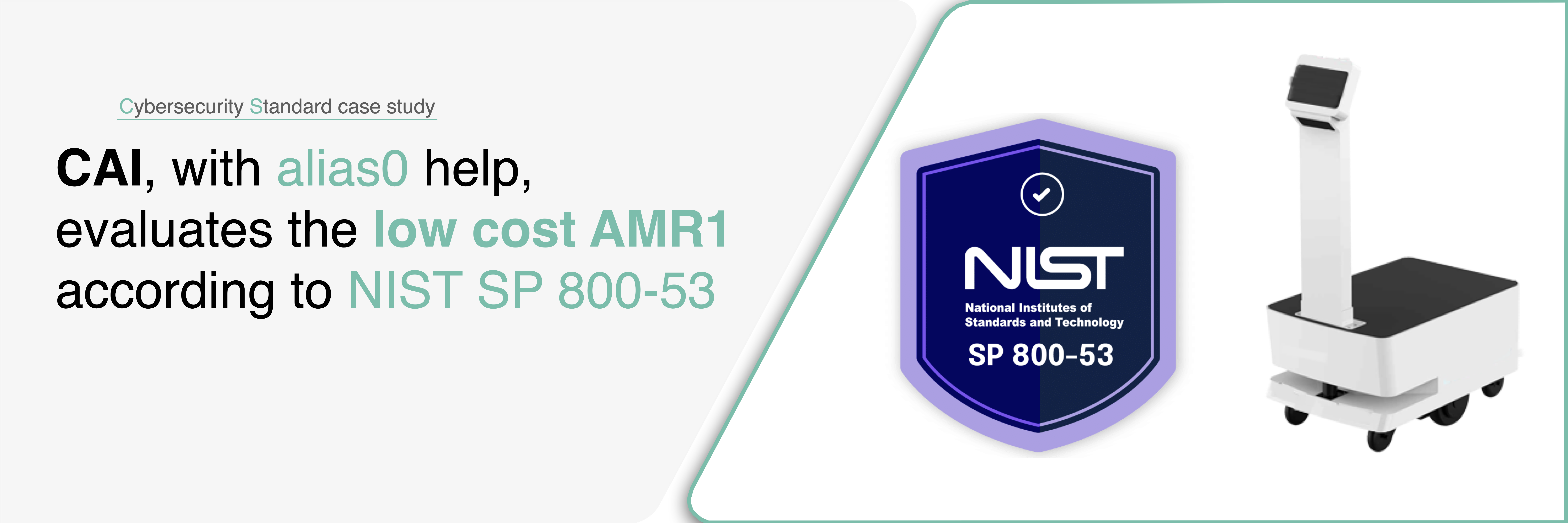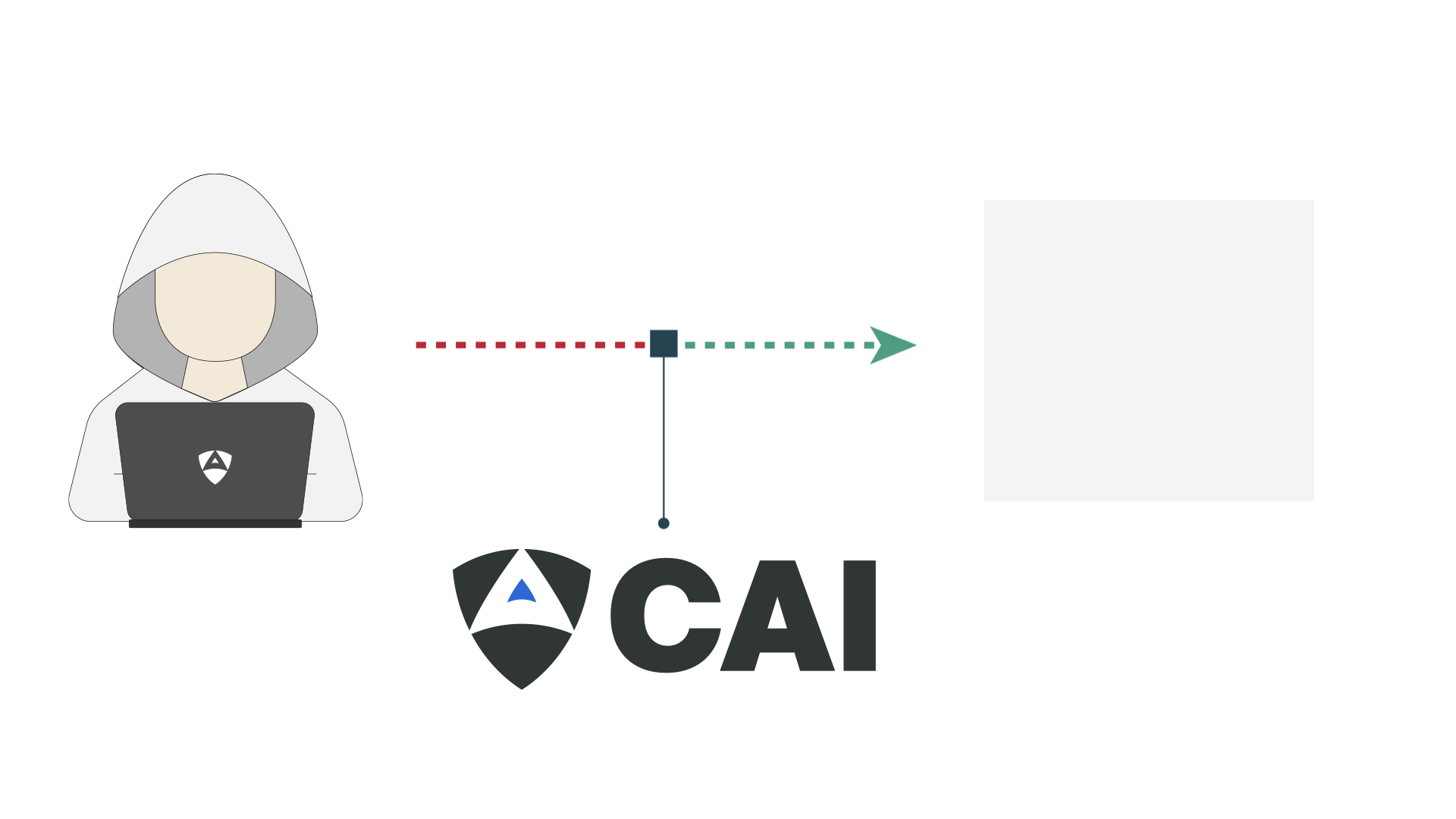

The low cost AMR1 autonomous mobile robot was assessed using the NIST SP 800-53 framework, applying the Low Impact Baseline to evaluate foundational cybersecurity controls. This baseline includes essential requirements across access control, audit logging, communications protection, and system integrity—aligned with environments where the impact of a breach is limited but still requires robust safeguards.
Leveraging the CAI (Cybersecurity AI) agent, the assessment was fully automated and targeted the AMR1 device at IP address 172.16.100.74. The agent scanned for exposed services, evaluated implemented security controls, and generated a structured compliance report. The resulting .txt file, saved locally, outlines which NIST controls were met and flags critical deficiencies. This case study illustrates the applicability of NIST frameworks to autonomous systems and the role of AI in automating standards-based evaluations.


This video shows a CAI agent performing an automated cybersecurity assessment of the low cost AMR1 based on the NIST SP 800-53 Low Impact Baseline. After detecting the device on the local network, the agent analyzed key security controls such as access enforcement, audit logging, and communication protection. The findings were compiled into a compliance report saved as a .txt file on the host machine, providing a snapshot of the robot’s adherence to baseline NIST requirements.
Open the report ❯CAI represents the first open-source framework specifically designed to democratize advanced security testing through specialized AI agents. By 2028, most cybersecurity actions will be autonomous, with humans teleoperating, making CAI's approach to AI-powered vulnerability discovery increasingly critical for organizational security. The framework transcends theoretical benchmarks by enabling practical security outcomes. CAI achieved first place among AI teams and secured a top-20 position worldwide in the "AI vs Human" CTF live Challenge, earning a monetary reward and various other prizes and bounties ever since then. This performance demonstrates that AI-powered security testing can compete with and often exceed human capabilities in vulnerability discovery.
Explore CAI's source code ❯The National Institute of Standards and Technology (NIST) is a U.S. federal agency responsible for developing and promoting measurement standards, including widely adopted frameworks for cybersecurity. NIST’s cybersecurity publications provide structured guidance to help organizations manage digital risks, protect critical assets, and align with best practices across industries. These standards are designed to be adaptable, supporting both public and private sector efforts to enhance security in diverse technological environments.
One of the most influential NIST publications is Special Publication 800-53, which defines a comprehensive catalog of security and privacy controls for information systems. These controls span technical, operational, and managerial domains—such as access control, system auditing, communications protection, and incident response—and can be tailored to different impact levels (Low, Moderate, High). NIST SP 800-53 is often used as a baseline for compliance and risk management, and it is increasingly relevant for evaluating the cybersecurity of connected devices and autonomous systems, including industrial robots and mobile platforms.
Low cost AMR1 is an autonomous mobile robot with remarkable performance, designed to optimize logistics and material handling in industrial environments. Its compact and agile design enables it to effectively navigate complex warehouse layouts and confined spaces. Low cost AMR1 stands out for its combination of low cost and high-performance control and operational capabilities, making it a highly attractive option compared to higher-priced alternatives.

11
~0.7 €
Validating a low-cost autonomous robot like the AMR1 against the NIST SP 800-53 standard introduces a distinct set of challenges. Originally designed for affordability and functional mobility, such platforms often lack built-in mechanisms to meet formal cybersecurity requirements. Applying the Low Impact Baseline of SP 800-53 requires evaluating a broad set of foundational controls—ranging from access enforcement and audit logging to communications protection and system integrity. Translating these generalized, IT-oriented controls to an embedded robotic system demands careful interpretation, technical probing, and creative mapping between control intent and the robot’s observable behavior and configuration.
To assess compliance with the NIST SP 800-53 Low Impact Baseline, CAI launched an automated scan of the AMR1 robot (172.16.100.78) to detect exposed services and evaluate implemented security controls. The agent mapped findings—such as access behavior, logging activity, and communication protocols—against relevant NIST controls. A structured compliance report was generated in plain text, summarizing both strengths and deficiencies in relation to the baseline requirements.
